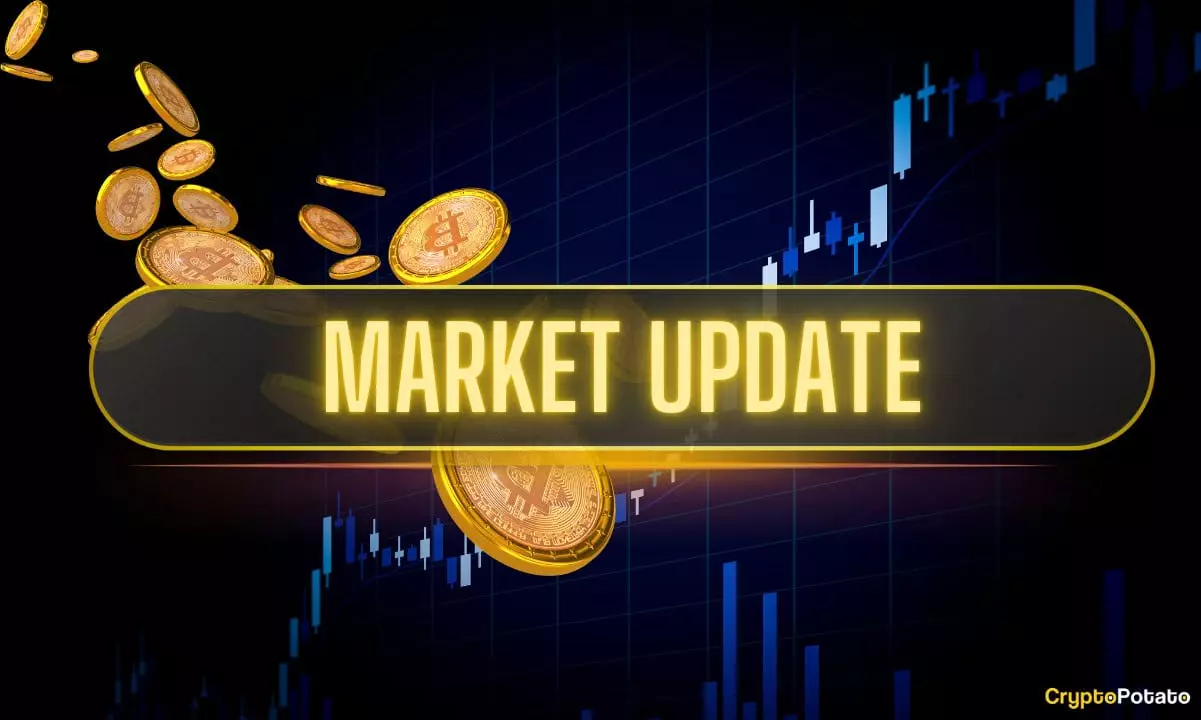The recent week in the cryptocurrency sphere has been notably less eventful compared to explosive prior periods, yet it’s essential to dissect the currents below the surface. Bitcoin (BTC), the flagship cryptocurrency, has wandered through a relatively narrow price corridor, predominantly hovering around $84,000. This stagnation is particularly revealing when considered against the backdrop of the violent fluctuations seen earlier, triggered largely by the Federal Reserve’s indecisiveness and a seemingly fortuitous outcome for Ripple against the SEC. The net effect of these developments has seen Bitcoin’s peak graze just shy of $89,000, indicating a glimmer of recovery that was short-lived.
The critical question here remains: is this pronounced volatility a momentary phase, or is it indicative of a larger malaise within the market? As the weekend waned, BTC exhibited promising movements but quickly lost momentum, underscoring a troubling pattern of instability. To experience such swift declines after a brief rally can only engender uncertainty among investors. This ongoing struggle for Bitcoin to maintain its foothold above $84,000 could presage deeper market complications.
Ripple’s Legal Shift: A Mixed Bag
On the legal front, Ripple’s recent decisions regarding its prolonged legal battle with the SEC warrant attention. The company’s Chief Legal Officer (CLO) declared that Ripple would not appeal the final ruling, effectively signaling the closure of a contentious over four-year lawsuit. Such an outcome theoretically should have buoyed XRP’s performance; however, it has instead witnessed an 8% decline over the past week, settling precariously above $2.2. This disconnect raises critical questions about market dynamics and investor sentiment.
The broader cryptocurrency space is complex and often resistant to rational behavior, as emotions tend to rule. Considering the monumental victory against the SEC, one would expect a rally in XRP, yet the reality has been starkly different. This disparity reveals the potential pitfalls in analyzing the market purely from a legal perspective. Legal victories do not guarantee financial ones—an unfortunate truth that continues to perplex both casual investors and seasoned analysts alike.
Altcoins Thrive Amidst Bitcoin’s Distress
While Bitcoin dances on the edge of a downturn, several altcoins have exhibited remarkable resilience, with digital assets like TON, SUI, AVAX, DOGE, and SHIB recording remarkable gains, some even in double digits. The market’s diverse movements highlight a critical evolution: as Bitcoin falters, investors are increasingly willing to diversify their portfolios into altcoins that are perhaps perceived as more volatile or adventurous but offer potential for greater short-term gains.
The rise of altcoins during BTC’s stalling trajectory reflects a pivotal transition in investor psychology. The evolving landscape of digital currencies suggests that there may be a paradigm shift at play. Participants are gradually becoming less reliant on Bitcoin as the sole signal of market health, indicating a growing maturity among crypto investors. This trend deserves further observation in order to understand whether it’s a short-lived phenomenon or the new norm.
Institutional Movements: GameStop’s Bold BTC Entry
In a striking pivot, GameStop has set its sights on Bitcoin, applying for a staggering $1.3 billion raise to invest in the cryptocurrency. This development showcases a significant shift, illustrating how traditional companies are not only acknowledging Bitcoin’s legitimacy but are also willing to place substantial bets on its future. This move is particularly salient given GameStop’s tumultuous journey through stock volatility, bringing intriguing parallels to its new cryptocurrency foray.
Such institutional engagement indicates that Bitcoin is gaining traction as a viable investment—no longer merely a speculative asset for tech enthusiasts but a strategic component for established companies’ financial portfolios. The implications of this trend become even more pronounced when considering the psychological weight such public endorsements carry. If major corporations align themselves with Bitcoin, it could herald a fundamental shift in societal perceptions toward cryptocurrencies.
The ETF Landscape: A Crucial Turning Point
The dynamics surrounding Bitcoin ETFs are also compelling, as significant changes loom on the horizon. After enduring tumultuous beginnings, recent developments in spot Bitcoin ETFs suggest a stabilization of investment flows. With such assets previously struggling, this newfound equilibrium points towards increased investor confidence and could pave the way for enhanced market legitimacy.
The narrative surrounding Bitcoin ETFs is not just about numbers on a chart; it speaks to the maturation of cryptocurrency as an institutional asset class. When companies like Bitwise assert that now is the “best time in history” to buy Bitcoin, it prompts a reevaluation of both timing and opportunity. As the cryptocurrency market becomes intertwined with traditional financial ecosystems, investment strategies are likely to evolve, leading to more sophisticated and nuanced engagements in both Bitcoin and altcoins.
The volatility witnessed recently, coupled with significant institutional maneuvers, paints a vivid picture of the cryptocurrency landscape—one fraught with potential yet riddled with risk. Observing these trends will be paramount as consumers navigate a market in constant flux, where sentiment remains king. As we continue to watch these unfolding events, one wonders: will Bitcoin be able to reclaim its former glory, or is a more diversified future finally in sight?















